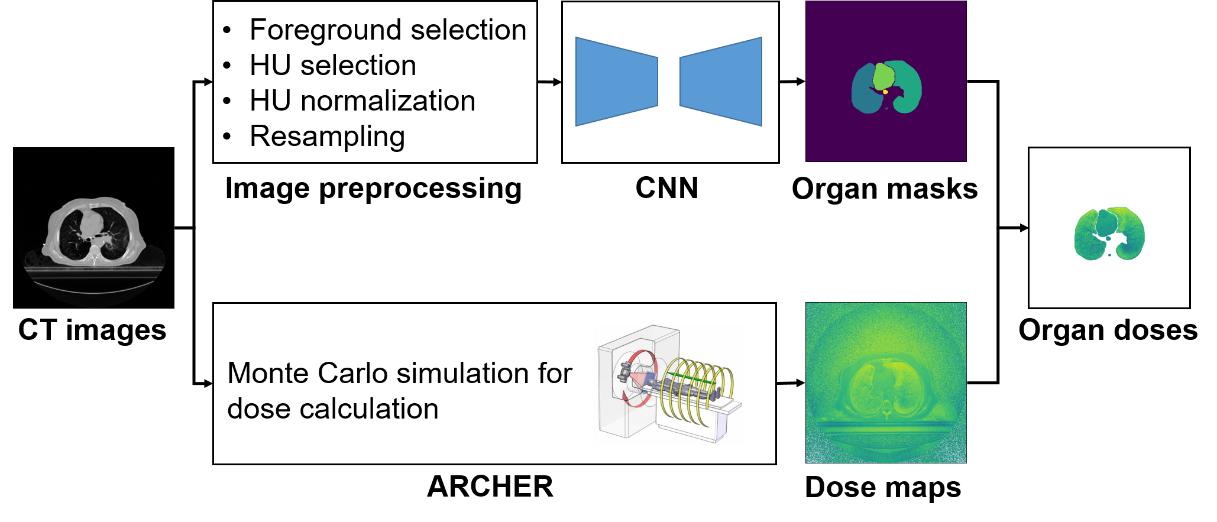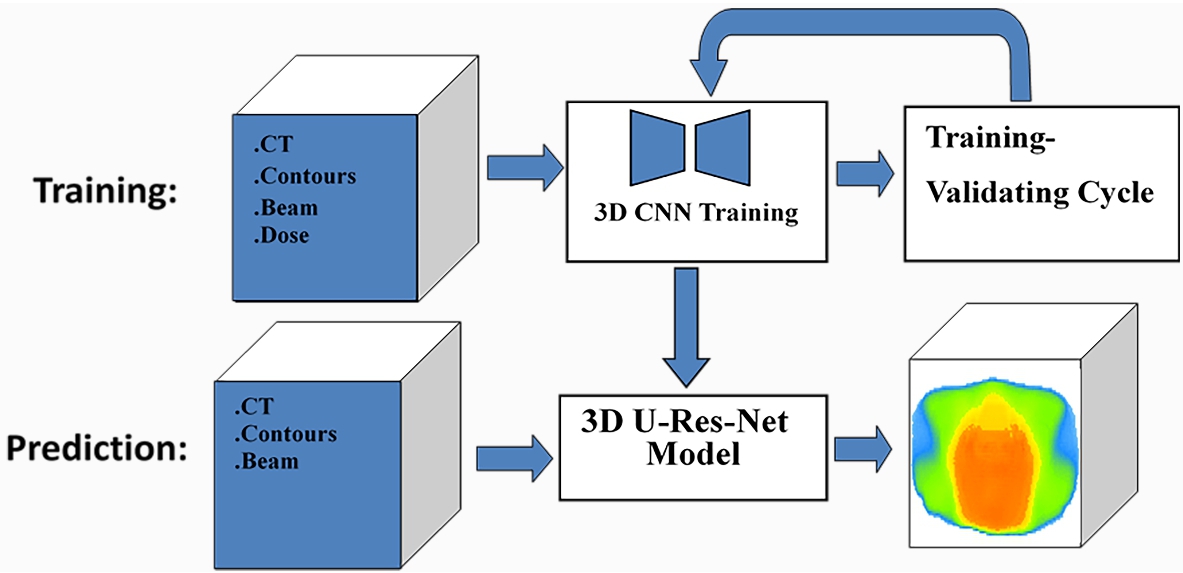文|彭昭 孟祥银 图|彭昭
近日,中科大放射医学物理中心周解平与彭昭两位同学再次在国际知名期刊上发表基于深度学习的SCI论文,至此,该中心共有三篇关于人工智能应用于放射治疗的科研论文得到国际同行的认可,这些研究成果涉及蒙卡加速、图像分割以及放射治疗剂量预测等方面。
“MCDNet – a denoising convolutional neural network to accelerate Monte Carlo radiation transport simulations: A proof of principle with patient dose from X-ray CT imaging”发表在IEEE Access期刊,彭昭的这篇文章首次提出了一个蒙特卡洛去噪神经网络模型MCDNet,如图1所示,在CT剂量计算上使用通过千分之一的光子数可以模拟出精确的剂量分布图,在保证精度的同时,极大的节约了蒙特卡洛方法在CT剂量计算上的时间,加速比高达76倍左右。

图1
“A Method of Rapid Quantification of Patient-Specific Organ Doses for CT Using Deep-Learning based Multi-Organ Segmentation and GPU-accelerated Monte Carlo Dose Computing”,已被Medical Physics期刊接受。在这篇文章中,彭昭提出了一种结合基于深度卷积神经网络的器官自动分割技术和基于GPU加速的蒙特卡洛剂量计算技术的新方法,实现了CT扫描过程中的器官剂量快速计算,其总体流程如图2所示。

图2
“A method of using deep learning to predict three-dimensional dose distributions for intensity-modulated radiotherapy of rectal cancer”,已被Journal of Applied Clinical Medical Physics期刊接受,周解平的这篇文章提出了一种利用深度卷积神经网络预测放射治疗中患者剂量分布的新方法,为未来的自动放疗计划奠定了基础,图3为该方法的流程图。

图3
除此之外,中科大放射医学物理中心的其他同学,如郭翌、宋宇宸、吴香奕、孟祥银和张功森等,也在研究如何将人工智能应用到各种医学物理的临床问题,包括基于深度学习的图像配准、图像生成(如MRI与CT间的转换)等。
文章链接:
MCDNet – a denoising convolutional neural network to accelerate Monte Carlo radiation transport simulations: A proof of principle with patient dose from X-ray CT imaging:
https://ieeexplore.ieee.org/document/8731974
A Method of Rapid Quantification of Patient-Specific Organ Doses for CT Using Deep-Learning based Multi-Organ Segmentation and GPU-accelerated Monte Carlo Dose Computing:
https://aapm.onlinelibrary.wiley.com/doi/10.1002/mp.14131
注:由于第三篇文章刚被接受,暂无链接
辐射防护与环境保护教研室党支部
2020年3月11日

